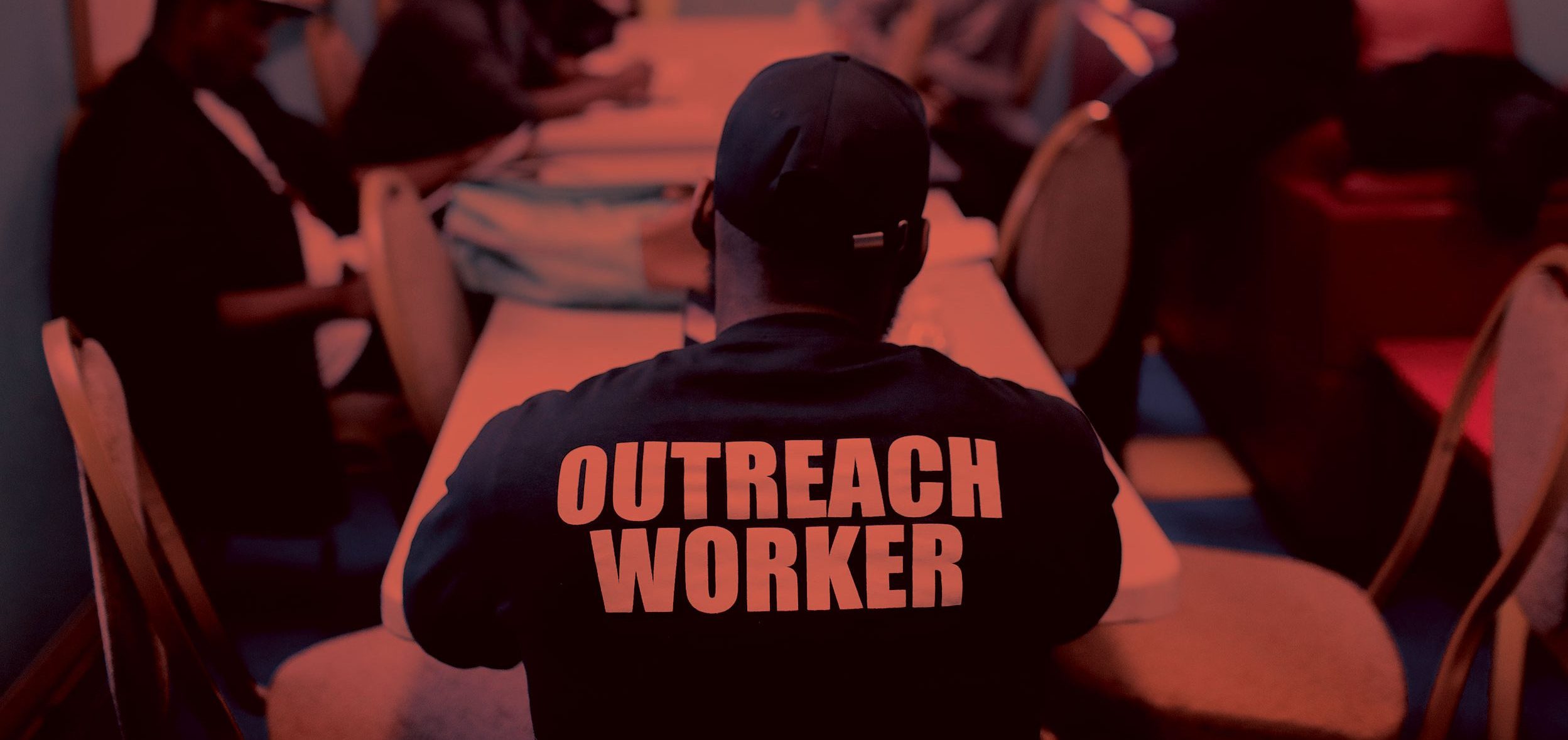IN THIS ARTICLE
Introduction Youth Involvement in Violent Crime Prevention program expectations Funding the police The impact of stop and frisk Guns and gun buybacks Broken windows theory The connection between incarceration levels & crime The impact of technology The way forward Download PDFIntroduction
In the last few years Philadelphia has seen record levels of violence. This undeniable crisis has led to a volatile and confusing conversation about what the city can do in response, complete with finger pointing and conflicting claims from different leaders. To inform the debate on how Philadelphia can move forward on making the city safer, we present eight hard truths about the nature of violence that policymakers must understand to make progress.
First, it is important to clarify that this brief is focused on serious community violence: shootings and homicides. Philadelphia has many other important violence-related problems, but the city’s recent spike in serious violence has cost hundreds of lives each year and necessitates urgent action.
This is not an impossible problem to address. Researchers and practitioners already understand much about serious violence, and that knowledge creates opportunities for a government response. For example, we know that shootings and homicides are highly concentrated in a small percentage of places and among a small number of people.1
Using the best available evidence, Philadelphia could apply its resources to address this concentrated problem, working from a framework that seeks to reduce serious violence while also preventing negative side effects on people and neighborhoods. A comprehensive approach to violence is required, and such plans involve key four elements:
- A careful analysis of the crime and violence problems facing the city.
- A clear set of outcomes as an initial focus, ideally starting with the most serious forms of violence (homicides and shootings).
- A strategy using research and evidence to harness effective programs toward the city’s goals.
- A management structure to sustain effort and attention to the city’s strategy.
Youth Involvement in Violent Crime
Hard Truth
Less than 10% of shootings involve individuals under the age of 18 as perpetrators or victims. Eighteen to 24-year-olds play a large role in city violence, but well over half of shooting victims are over the age of 25.
Using publicly available data, The National Institute for Criminal Justice Reform (NICJR) conducted an in-depth analysis of all gun-related homicides in the city in 2021. The analysis found that victims and suspects largely fell in the 18-34 age range, with the average age of victims just under 30 and the average age of suspects about 27; the data was much more robust for victims than for suspects. There has been a worrying increase in violence committed on and by individuals younger than age 18 in the last few years,2 but it still accounts for a relatively small percentage of overall violence.
Importance
Understanding the problem is an essential first step to designing an effective strategy.
Starting with data such as the average age of offenders is essential to help a city develop an effective strategy by defining and linking different programmatic efforts. For example, a program that focuses heavily on young people, even if it produces positive outcomes, may be perceived as a failure if annual homicide numbers remain high due to continued violence among older people. Understanding the problem in full and linking it to a larger strategy would allow the city to understand the program’s specific value in a larger context.
A very small share of the city is most likely to commit a gun crime or fall victim to one. Understanding who is involved and what dynamics are driving their behavior is a key step to the implementation of appropriate gun violence prevention and intervention efforts.
Prevention program expectations
Hard Truth
Reducing serious violence requires significant resources devoted to a near-term outlook—ignoring the immediate crisis could undermine and impede investments in beneficial long-term efforts aimed at underlying causes.
A comprehensive violence strategy will include near-term, mid-term, and long-term transformation efforts. Near-term violence reduction efforts include direct outreach and engagement with individuals who are at immediate high-risk for being a victim or perpetrator of a shooting.
One type of near-term strategy is known as focused deterrence or Group Violence Intervention (GVI). Such efforts have been implemented in several cities with successful results, such as Oakland, CA, which cut its annual shootings nearly in half from 2012 to 2018.3 Philadelphia’s GVI program has shown promising results in a recent evaluation4 as well as in an evaluation of the city’s previous attempt at the program.5 Although overall shootings increased in three of the four Philadelphia police districts in which GVI was implemented, GVI was associated with reduced average weekly shootings for the groups with which it engaged, representing a clear “proof of concept.”6 There are other studied examples of short-term approaches that decrease violence—the programs with the best evidence involve focused law enforcement that is tightly linked and coordinated with social services and outreach work. There have also been some recent examples of rigorous and targeted street outreach programs that have reduced violence.
Many research studies also show the value of long-term investments. For example, a study of public school funding from Michigan found that children who were enrolled in schools that received quality improvements were less likely to be arrested in adulthood, compared to children in schools that did not receive these investments.7
However, given the fact that 90 percent of shootings involve people age 18 and older, investments in elementary-school children would take a decade or more to influence serious violence dynamics. At the same time, multiple studies8 have shown that exposure to ongoing violence can undermine public investment in education by shortening students’ attention spans, reducing their performance on standardized English tests, and even reducing passing rates among Black students.
Importance
Long-term programs are compelling and popular but can be undone by the sharply negative effects of violence happening in communities now. Failure to address the ongoing violence crisis may also undermine faith and confidence in the city’s ability to tackle violence on any time scale.
Funding the police
Hard Truth
Providing financial support for the police department is a necessary, but not sufficient, element in reducing violence—how the police respond
to the problem is the most important factor. Similarly, non-police groups, such as street outreach workers, are necessary to make many violence prevention strategies successful, but can be ineffective if not managed as part of a larger effort.
Certain crime solving strategies that focus on high-risk individuals, places, and community problems, are considered more effective than traditional policing strategies.9 These include strategies like focused deterrence/GVI, problem-oriented policing, and hot-spots policing, which require significant financial investment and police capacity. Once that capacity has been built and those investments made, it is vital that police operate within a management and accountability structure following the strategy. Spending more money by a department, or hiring more officers, will not yield crime-reduction results unless those officers and dollars are doing the right kind of work. Of course, without police capacity in the first place, it is impossible for police departments to be strategic.
Similarly, civilian violence prevention hires, such as street outreach workers, can be effective when harnessed as part of a larger strategy.10 Street outreach is a core principle of many interventions, such the Rapid Employment and Development Initiative (READI)—a supported-employment and cognitive behavioral therapy program launched in Chicago.
An evaluation of READI found that program participants who were referred by street outreach workers had “enormous” declines in both arrests and likelihood to be shot or
killed.11 Many prevention efforts would be virtually impossible without sufficient outreach capacity. However, evaluations of street outreach programs in different cities have yielded mixed results, with some outreach programs possibly increasing violence.
Importance
Police and non-police efforts should not be placed in opposition. Case studies have shown that cities that have reduced violence are ones that have sufficient capacity of both—with the two elements linked tightly together and working in a common strategy. In either police or non-police interventions, activity without strategy does not yield compelling results (and can be harmful).
The impact of stop and frisk
Hard Truth
Unfocused, overly-aggressive stop-and-frisk policies have minimal effects on crime and also create other negative effects for communities. Stop and frisk is best understood as a tactic that should be used in a limited and constitutional manner; it is not a crime reduction strategy.
Research in New York City showed that the extensive stop-and-frisk policy there did very little to reduce crime. Stop and frisk was beneficial only when used in a focused and lawful manner.12 There is some evidence that the tactic could be effective when targeted on high-risk people or places.13 But, any use of stop and frisk runs the risk of negatively impacting communities if officers are not narrowly focused and operating in a constitutional manner.
Philadelphia has its own history with stop and frisk. During the 2000s, the “number of stops” became a management metric for the police department, thereby encouraging officers to make stops more often. By 2011, Philadelphia had a high number of stops per capita, predominantly targeted at racial minorities (with a low hit rate for finding weapons). This resulted in a lawsuit filed by the American Civil Liberties Union of Pennsylvania which was resolved by an agreement to appoint independent monitors of the policy, and ultimately led to reform of its use.
Importance
Evidence shows that broad, unfocused police activity does very little to reduce crime. This finding—combined with the danger that stops could involve constitutional violations if not tightly managed—suggests that policies emphasizing stop and frisk are more likely to be harmful than helpful. If unconstitutional stops harm police legitimacy, it could make it harder for police to do their jobs in any area that requires public collaboration. Specific management of crime hotspots, coupled with enhanced training for police-community relationship-building, could provide a better starting point for thinking about how the police can proactively interact with the community. One recent multi-city evaluation suggests this approach (which included “procedural justice” training of police) can reduce both crime and arrests, and lead to better community perceptions of police on some dimensions.14
Guns and gun buybacks
Hard Truth
It is valuable to pursue illegal gun traffickers; illegal weapons are often used in violent crimes. But, there is no strong evidence that gun buybacks reduce gun violence. Ultimately, reducing the number of guns in Philadelphia by any method could take decades.
Gun buybacks, where money or gift certificates are exchanged for weapons, have proliferated in communities around the United States, but evidence in support of these programs reducing gun violence is weak, especially compared to other policies and programs with a similar goal.15 Despite no strong evidence that buybacks reduce gun violence, buybacks may contribute to other important goals, such as community mobilization and awareness.16 One reason that gun buybacks generally do not reduce crime or violence is that they don’t actually target the guns used in shootings. In fact, law-abiding citizens tend to be the ones participating in buybacks.
Efforts in Boston have shown it may be possible to target gun buybacks more narrowly.17 Even then, they do not reduce shootings in the short-term. If civic groups are interested in continuing buyback programs, they should also consider targeting their efforts to people of proven risk, which may entail offering higher payments for illegal guns to fewer people. This approach has not yet been attempted, but is more closely aligned with research findings regarding the nature of gun violence.
Importance
The prevalence of illegal firearms makes reducing violence challenging. However, many cities have cut crime and violence significantly despite having a high concentration of illegal firearms. Hoping to reduce violence by waiting for the gun problem to be solved, through buybacks or legislation, is a recipe for failure.
Broken windows theory
Hard Truth
Studies generally suggest that enforcing against minor offenses does not reduce crime and could be harmful to communities. However, there is significant evidence supporting the idea that improving conditions in communities can reduce crime and violence.
The so-called “broken windows” theory is based on the notion that there is a connection between disorder and crime—that minor offenses and chaotic environmental factors cause serious crime and violence, if unaddressed.18 An unrepaired broken window may be a signal that no one in the community cares about the area, and therefore, crime might be allowed to flourish. Some political leaders have interpreted this logic as supporting high-arrest strategies for low-level quality of life offenses, rather than working with communities to develop problem-solving strategies for neighborhood issues.19
Research has shown that such policing does not reduce crime, while community and problem-solving interventions around social and physical disorder can be effective.20 In fact, research from Philadelphia has shown that built-environment interventions—such as greening vacant lots, remediating abandoned houses, and investing in home repairs for low-income owners—can significantly reduce crime.21
Importance
Aggressive and unfocused strategies claiming support from the “broken windows” theory have the potential to severely harm communities and fail to reduce crime. The connection between disorder and crime can be addressed collaboratively with communities to reduce social disorder and improve the physical environment.
The connection between incarceration levels & crime
Hard Truth
Evidence suggests it is possible to reduce crime and violence while, at the same time, shrinking prison and jail populations by addressing unnecessary incarceration.
While incarceration stops people from committing crimes while in prison,22 there is some evidence that incarceration can actually increase crime through recidivism, especially when done pre-trial and without rehabilitative programming.23
A key principle is to focus resources on repeat violent offenders. There is substantial evidence that programs focusing on increasing formal social control (e.g. police) and informal social control (e.g. families and communities)—and targeted at the small percentage of offenders that generate the most crime and violence—can produce outsized crime reduction effects with minimal infringement on the community.24
From 2016 to 2023, Philadelphia’s prison population dropped by nearly 50 percent, while the city’s homicide rate nearly doubled. Despite these two trends occurring during roughly the same time, there is no data that suggests the two are related. A closer look at the data reveals that the prison population dropped to around its current level by January 2019, but violence didn’t surge in the city until July 2020—the same time that cities across the country saw violence rise.
Data tracking US police departments shows that police presence can reduce both violence and incarceration—larger departments reduce the number of homicides in cities and make fewer arrests for serious crimes (and especially reduce arrests for Black suspects).
This may be because larger departments are deterring crimes from happening in the first place. Of course, increased police presence certainly can increase incarceration depending on government policies and management—the same analysis found that adding more police officers tends to result in disproportionately more arrests of Black people for low-level “quality-of-life” offenses.25 Alternatives to incarceration can also play an important role, suggesting prosecutors and courts need to work with police to ensure the justice system is being narrowly targeted.
Importance
Deciding to accept the narrative that more incarceration leads to less crime will result in ineffective policy and is not supported by evidence. Incarceration can lead to negative outcomes for individuals, families, and communities, especially when highly concentrated in disadvantaged neighborhoods. Cities should maintain a focus on reducing unnecessary incarceration while pursuing crime reductions—it is very possible to do both. Boston’s 2007 GVI strategy managed to bring down homicides and arrests simultaneously in the city, and there are other similar examples.
The impact of technology
Hard Truth
New technology can provide opportunities for government, but only if used thoughtfully and managed well.
Philadelphia and other cities have piloted a number of promising technologies around crime and violence prevention, including body-worn cameras, gunshot detection systems, street cameras, and mobile phones for officers—all with mixed results.
A 2016-2017 Philadelphia-based study indicated that officers using body-worn cameras had lower percentages of use-of-force incidents.26 But, it also found that the cameras limited their interactions with community members, meaning officers had fewer opportunities to face scrutiny. Nationally, a review of the evidence around body-worn cameras found that specific police department policy may be key to the effectiveness of body-worn cameras (cameras may only reduce use-of-force when police have less discretion to turn them off).27
An evaluation of Philadelphia’s acoustic gunshot detection system showed that implementation of the program resulted in a 259 percent increase in detected gunshot incidents,28 but no related increase in the number of actual confirmed shootings. One report indicated that many of the detected shootings were false alarms.29 Instead of providing reliable information on the number and location of shootings in Philadelphia, the system reduced officer efficiency by dispatching them to mistaken gunfire calls.
In 2021, Philadelphia police officers were issued cellphones designed to give them better information to do their jobs. An evaluation suggested the phones helped officers solve cases and allowed them to focus more of their resources on actual crimes. However, it also found that few officers actually used the phones, and managers did not enforce use of the technology.30
Cameras and CCTV (closed-circuit television) face similar challenges—the cameras could go unused, fail to be maintained, be deployed to poor locations, or be used in ways that alienate residents.
Importance
Technological solutions are attractive because we see them as new ideas that fill voids and overcome barriers in a simple matter. Evidence shows there is no substitute for actual management and strategy. New technology can provide opportunity, but governments are complex systems which require more than new equipment to overcome longstanding problems, such as community violence.
The way forward
Violence can be an incredibly difficult problem to solve. Understanding some of the hard truths about violence is just a starting point.
The cities or neighborhoods that are successful in reducing crime are the ones that take comprehensive approaches—not ones that expect single miracle programs to reverse decades of disinvestment in communities.
As mentioned earlier, comprehensive approaches need to involve four elements:
- careful analysis of the crime and violence problems facing the city;
- a clear set of desired outcomes;
- a strategy based on research and evidence; and
- a focused management structure.
These four elements work together, and all need to be present for a city to be successful. Individual programs are important, but cannot work on their own. They ensure that the city:
1.
has an understanding of its problems so that
programs can be leveraged in response;
2.
establishes clear outcomes to
create a shared vision of success;
3.
creates a coherent strategy that can link the efforts of programs and ensure they are working together; and
4.
exercises management attention to make sure that all elements of the strategy are working together to prevent gaps in implementation.
These elements are challenging to get right, and even more challenging to sustain. However, many cities—even cities with limited resources—have shown that it is possible to achieve and maintain reductions over years, and even decades.
The authors are grateful for the contributions and ideas of numerous colleagues including Anthony Braga, Dan Berkowitz, Larry Eichel, Caroline La Rochelle, John MacDonald, Shawn McCaney, Caitlin O’Brien, Pedro Ramos, Caterina Roman, And Kevin Thomas.
-
MacDonald, J., Mohler, G., & Brantingham, P. J. (2022). Association between race, shooting hot spots, and the surge in gun violence during the COVID-19 pandemic in Philadelphia, New York and Los Angeles. Preventive medicine, 165, 107241.
-
Jay, J., Martin, R., Patel, M., Xie, K., Shareef, F., & Simes, J. T. (2023). Analyzing child firearm assault injuries by race and ethnicity during the COVID-19 pandemic in 4 major US cities. JAMA network open, 6(3), e233125-e233125.
-
McLively, M. & Nieto, B. (2019). A case study in hope: Lessons from Oakland’s remarkable reduction in gun violence. Giffords Law Center to Prevent Gun Violence. https://policingequity.org/images/pdfs-doc/reports/A-Case-Study-in-Hope.pdf
-
Moyer, R.A. (2023). An Evaluation of the Current Group Violence Intervention (GVI) Implementation in Philadelphia. https://crimejusticelab.org/wp-content/uploads/2023/02/PENN-GVI-EVALUATION-REPORT-FOR-POSTING-20230227.pdf
-
Roman, C., Hyatt, J., McConaghy, M., & Link, N. (2017). Philadelphia Focused Deterrence: Findings from the Impact Evaluation. https://liberalarts.temple.edu/sites/liberalarts/files/SummaryofPhilaFocusedDeterrenceImpactEval_Fall2017.pdf
-
NOTE: To provide some context on Philadelphia’s GVI strategy, it only had three case managers during the period in which it was studied— examples in other cities often have dozens to reach citywide scale.
-
Baron, E.J., Hyman, J., Vasquez, B. (2022). Public School Funding, School Quality, and Adult Crime. https://www.nber.org/system/files/working_papers/w29855/w29855. pdf
-
Sharkey, P., Schwartz, A. E., Ellen, I. G., & Lacoe, J. (2014). High stakes in the classroom, high stakes on the street: The effects of community violence on student’s standardized test performance. Sociological Science, 1, 199.; Sharkey, P. T., Tirado-Strayer, N., Papachristos, A. V., & Raver, C. C. (2012). The effect of local violence on children’s attention and impulse control. American journal of public health, 102(12), 2287-2293.
-
Telep, C. W., & Weisburd, D. (2012). What is known about the effectiveness of police practices in reducing crime and disorder?. Police quarterly, 15(4), 331-357.
-
Effective Community-Based Violence Reduction Strategies. (2021). National Institute for Criminal Justice Reform. https://nicjr.org/wp-content/uploads/2021/06/Effective-Community-Based-Violence-Reduction-Strategies.pdf
-
READI. UChicago Crime Lab. https://urbanlabs.uchicago.edu/programs/readi
-
MacDonald, J., Fagan, J., & Geller, A. (2016). The effects of local police surges on crime and arrests in New York City. PLoS one, 11(6), e0157223.
-
Weisburd, D., Wooditch, A., Weisburd, S., & Yang, S. M. (2016). Do stop, question, and frisk practices deter crime? Evidence at microunits of space and time. Criminology & public policy, 15(1), 31-56.
-
Weisburd, D., Telep, C. W., Vovak, H., Zastrow, T., Braga, A. A., & Turchan, B. (2022). Reforming the police through procedural justice training: A multicity randomized trial at crime hot spots. Proceedings of the national academy of sciences, 119(14), e2118780119.
-
Makarios, M. D., & Pratt, T. C. (2012). The effectiveness of policies and programs that attempt to reduce firearm violence: A meta-analysis. Crime & Delinquency, 58(2), 222-244.
-
Carpenter, S., Borrup, K., Campbell, B.T. (2021). Gun buyback programs in the United States. In M. Crandall, S. Bonne, J. Bronson, & W. Kessel (Eds.), Why we are losing the war on gun violence in the United States (pp. 173-186). Springer. https://doi.org/10.1007/978-3-030-55513-9_15
-
Braga, A. A., & Wintemute, G. J. (2013). Improving the potential effectiveness of gun buyback programs. American journal of preventive medicine, 45(5), 668-671.
-
Jonas, M. (2019) The complicated legacy of ‘broken windows’ policing. CommonWealth. https://commonwealthmagazine.org/criminal-justice/the-complicated-legacy-of-broken-windows-policing/
-
College of Policing. (2021). Zero-Tolerance Policing. https://www.college.police.uk/research/what-works-policing-reduce-crime/zero-tolerance
-
Braga, A. A., Welsh, B. C., & Schnell, C. (2015). Can policing disorder reduce crime? A systematic review and meta-analysis. Journal of Research in Crime and Delinquency, 52(4), 567-588.
-
Cui, J., Jensen, S. T., & MacDonald, J. (2022). The effects of vacant lot greening and the impact of land use and business presence on crime. Environment and Planning B: Urban Analytics and City Science, 49(3), 1147-1158; South, E. C., Macdonald, J. M., Tam, V. W., Ridgeway, G., & Branas, C. C. (2023). Effect of abandoned housing interventions on gun violence, perceptions of safety, and substance use in Black neighborhoods: a citywide cluster randomized trial. JAMA internal medicine, 183(1), 31-39; South, E. C., MacDonald, J., & Reina, V. (2021). Association between structural housing repairs for low-income homeowners and neighborhood crime. JAMA network open, 4(7), e2117067-e2117067.
-
Roodman D. (2017). The impacts of incarceration on crime. Rep., Open Philanthropy., San Francisco, CA. https://www.openphilanthropy.org/files/Focus_Areas/Criminal_Justice_Reform/The_impacts_of_incarceration_on_crime_10.pdf
-
Loeffler, C. E., & Nagin, D. S. (2022). The impact of incarceration on recidivism. Annual Review of Criminology, 5, 133-152.
-
MacDonald, J. (2023). Criminal justice reform guided by evidence: social control works—The Academy of Experimental Criminology 2022 Joan McCord Lecture. Journal of Experimental Criminology, 1-18.
-
Chalfin, A, Hansen, B., Weisburst, E.K., and Williams Jr., W.C. (2022). Police Force Size and Civilian Race. American Economic Review: Insights, 4 (2): 139-58.
-
Groff, E. R., Haberman, C., & Wood, J. D. (2020). The effects of body-worn cameras on police-citizen encounters and police activity: evaluation of a pilot implementation in Philadelphia, PA. Journal of experimental criminology, 16, 463-480.
-
Lum, C., et al. (2020). Body-worn cameras’ effects on police officers and citizen behavior: A systematic review. Campbell Systematic Reviews. https://onlinelibrary.wiley.com/doi/epdf/10.1002/cl2.1112
-
Ratcliffe, J.H., Lattanzio, M., Kikuchi, G. et al. (2019). A partially randomized field experiment on the effect of an acoustic gunshot detection system on police incident reports. J Exp Criminol 15, 67–76. https://doi.org/10.1007/s11292-018-9339-1
-
Dent, M. (2016). Philly police have used secret gunshot detection tech since January. Billy Penn: https://billypenn.com/2016/06/16/philly-police-have-used-secret-gunshot-detection-tech-since-january/
-
Chalfin, A., Ridgeway, G., MacDonald, J. Ryley, R. (2022). Crime Prevention Through Intelligence and Information Sharing. https://crimejusticelab.org/wp-content/uploads/2023/02/Crime-Prevention-Through-Intelligence-and-Information-Sharing.pdf




